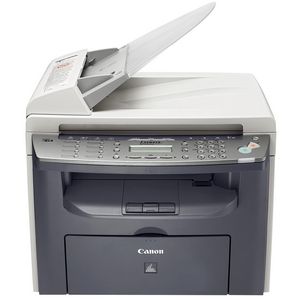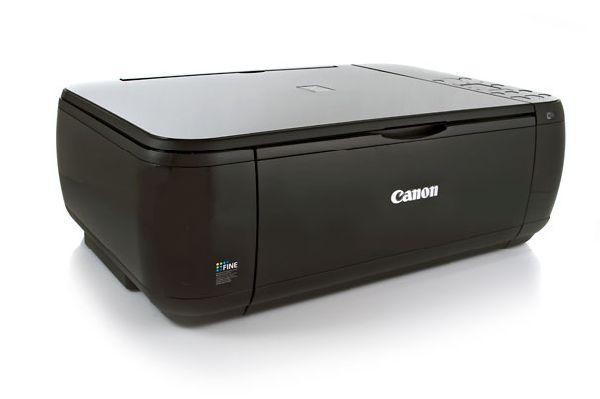Back To School Technology Buyer's Guide
by Zach Throckmorton on August 4, 2011 8:55 PM ESTPrinters
The second peripheral every college student should consider buying is a printer. You might have easy access to a printer in your dorm, or the nearest campus lab might be a hike from your apartment. And you might not finish your paper until 3am, and it might be the end of December and your northern campus is getting hammered by a snowstorm—doing that once was enough to motivate me to save up enough money for a printer!
Printers come in three basic types: laser, inkjet, and all-in-ones. All-in-ones combine a copier, scanner, and printer (either a laser or inkjet) into one device. Inkjet printers are usually the least expensive initially, but the cost of printing (the ink cartridges) is usually higher per page than laser printers. Laser printers can sometimes be quite inexpensive, and while toner cartridges cost more than ink cartridges, they last much longer. The majority of printing done by college students is black and white text, and for that reason, I recommend laser printers over inkjet printers. However, if you won’t be printing that much (say, less than 100 pages per month), an inkjet printer is a viable solution. I particularly like all-in-ones because they often aren’t that much more expensive than dedicated printers and being able to copy and scan at home means fewer trips to the computing center or library—and not getting nickle and dimed for those services, as most colleges charge a per-page fee for them.
Canon's PIXMA ip2702 is an inexpensive inkjet at $34 that can handle occasional printing with ease. Spending more money on a dedicated inkjet printer can yield additional features like wireless printing and higher quality picture printing, but durability and reliability general don't start to improve until you shell out $200+ on a prosumer or commercial grade inkjet. For mostly black and white text, cheaper inkjets are just as good as cheap inkjets.

If you'll be printing out hundreds of pages of text per month, Brother's HL-2240D and Samsung's ML-2525 are great budget options. Both can occasionally be found on sale for $50 or less. Neither of these models are built like tanks, but if you take care of them, they'll last for years (I still use a Samsung ML-2010 that I bought in 2006). Like inkjets, spending more money on a laser printer might mean faster printing, wireless printing, and/or more capacious toner cartridges, but again, these features are not necessary for most college students.

Finally, Canon's PIXMA MP495 and imageCLASS MF4350d are inkjet and laser (respectively) all-in-ones. The MP495 is compact in size and also features wireless printing, while the MF4350d is physically larger (though its footprint is not terribly large, unlike many dedicated scanners). The MP495 is currently on sale for less than $60, so unless you're very budget-conscious, the added scanning and copying capabilities are definitely worth the $20 extra compared to the PIXMA ip2702. At less than $100, the MF4250d is very competitively priced compared to other laserjet all-in-ones. Regardless of whether you use a dedicated inkjet or laser printer, or some sort of all-in-one, keep in mind that you can dramatically lower printing costs by refilling ink and toner cartridges.
If you'd rather read papers, book chapters, and assignments on a portable device than printing out sheet after sheet of paper, we cover tablets and ereaders on the next page.











94 Comments
View All Comments
frozentundra123456 - Friday, August 5, 2011 - link
That sounds like a quite good idea. Can you just hook up a USB keyboard to a laptop and use it seamlessly, or do you have to somehow tell the laptop which keyboard is active??If you did this, you would save the cost of buying a laptop and separate desktop, but if you are very space limited, I am not sure that a laptop, external keyboard, and external monitor wouldnt take up as much space as a desktop. And you can set a desktop on the floor, while I am not sure you would want to do that with a laptop.
But I am not trying to put down your idea. It is a very valid and original alternative.
JarredWalton - Friday, August 5, 2011 - link
The problem is, a laptop that can compete with a desktop for performance will cost twice as much. You can build a $750 desktop that will outperform $1500 laptops. So, there's flexibility in getting a $750 laptop and $750 desktop in place of a single $1500 "do everything" laptop. It's not that you can't do it all on a laptop, of course, but there are certain things that will always be faster on desktops for less money (e.g. gaming).frozentundra123456 - Friday, August 5, 2011 - link
Jared,What you say is certainly true. However, if you only want to surf the net, do office type apps, and listen to music or watch videos, a 750.00 or even cheaper laptop is probably all the power you need. And I hate to admit it, but for gaming, a lot of college students probably use a console instead of the PC.
frozentundra123456 - Friday, August 5, 2011 - link
BTW, sorry about the misspelling of your name!JarredWalton - Friday, August 5, 2011 - link
No worries, and you're absolutely correct: if you don't care about gaming, honestly, Intel's IGP is perfectly adequate for 99% of users. You can watch videos without issue on any laptop made within the past four years (excluding Atom, of course), doing office work reached the point where a faster CPU didn't matter much back in the early 2000s, and surfing the net will generally be fast enough even on CULV and Brazos processors.If you're a parent buying a laptop for your college kid and you don't want them playing games? I'd recommend Brazos or an entry level Sandy Bridge as a good $400~$600 laptop -- or get a Llano laptop if you want gaming to be better.
TrackSmart - Friday, August 5, 2011 - link
At the very least, the option of a light-weight laptop plus external monitor should be part of this discussion. There are significant advantages to having only a single computer with all your files and programs always available.**Potential options if you expand your guide:**
Thinkpad X220 + External monitor
Toshiba Portege R835 + External monitor
13" Macbook Air + External Monitor
(These all weigh in around 3 lbs and have good performance, build quality, and battery life. I didn't list any of the Acer or consumer-level Sony laptops b/c I don't have confidence that they would last for 4 yrs...)
TrackSmart - Friday, August 5, 2011 - link
One more thing. Yes, this precludes PC gaming, but that's less of a trade-off in these console-dominated days...johnnywa - Friday, August 5, 2011 - link
Of all the laptops I've tried this with, both the usb keyboard and the laptop keyboard would remain active, so both can be used at the same time.I agree that this wouldn't save much space over just a regular desktop, but I think some people, like me, only want one computer (one single laptop as opposed to desktop + netbook), and don't want to worry about having to keep files synced across multiple computers using USB drives, Dropbox, etc. Thanks!
overseer - Friday, August 5, 2011 - link
If only the mini-ITX DIY setup consists of A75 ITX + low power Llano...Actually I've seen an ASUS A75 ITX MB the other day, so it just boils down to when AMD launches the 65W A8s and A6s.
Gigantopithecus - Friday, August 5, 2011 - link
Hi overseer - Where did you see a Llano ITX board?! I check Newegg, Ewiz, Amazon, etc. every morning and haven't seen one available yet. And I completely agree with your second sentiment - I can't wait for the 65W A-series APUs to be released!